China has been quietly developing a penetrating unmanned aircraft capability over the last decade, but in recent weeks their efforts to field such a concept have seemed to of accelerated and become more public. This is occurring as American unmanned combat air vehicle (UCAV) development efforts have totally disappeared from the public domain, a phenomenon we have detailed in great depth, and one that has significant strategic repercussions.
At this year’s Singapore Air Show, Chinese aerospace company Star Systems showed off a model of its stealthy “Star Shadow” flying-wing drone. It’s design is very familiar, looking like something of a mix between the American P170 Polecat and X-47B designs, as well as Boeing’s conceptual art for their failed Long Range Strike Bomber entrant.
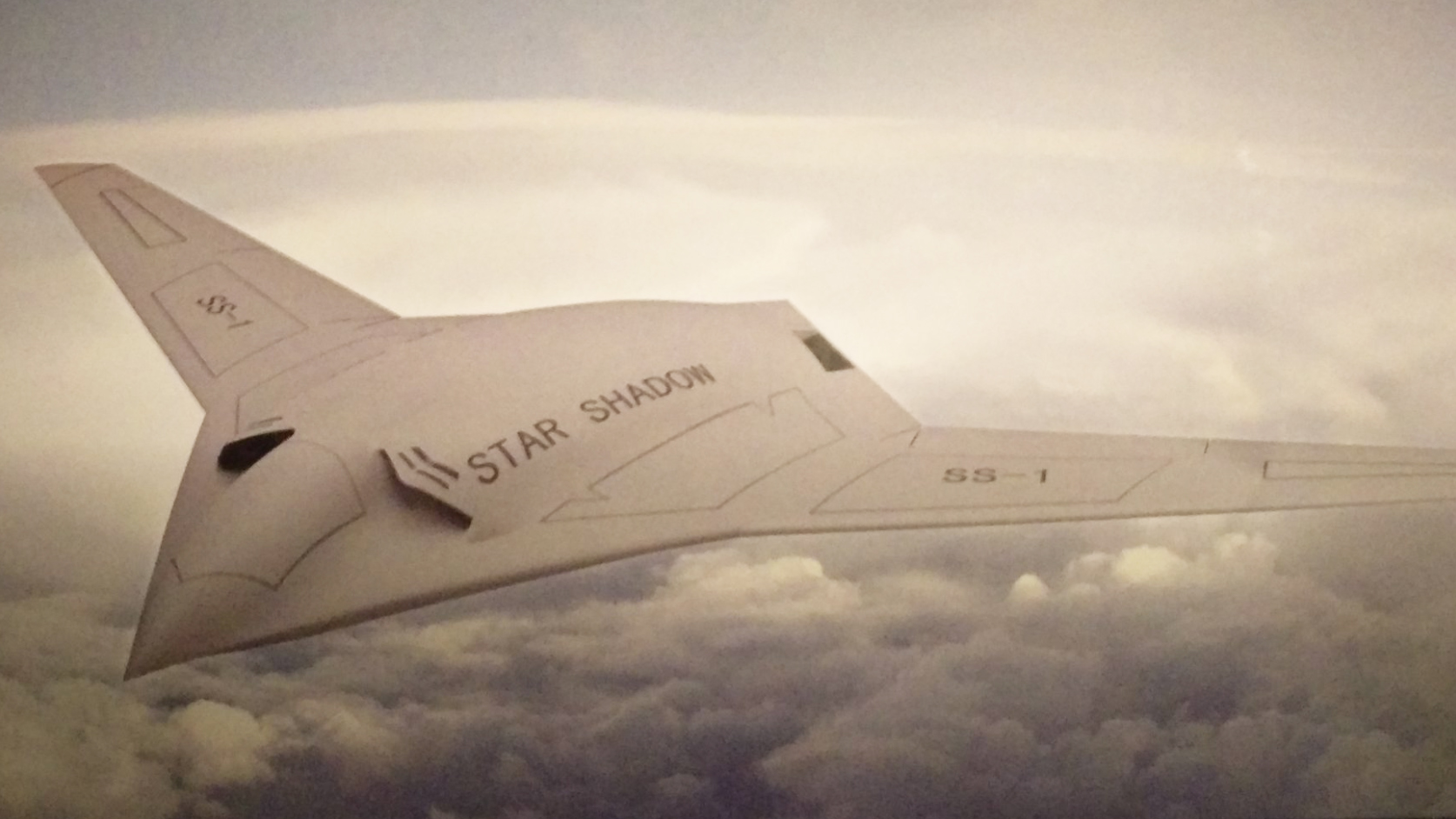
In fact, it eerily matches the look of an unmanned aircraft configuration released by Boeing, possibly taken from an actual simulation, for an unmanned aircraft refueling capability.
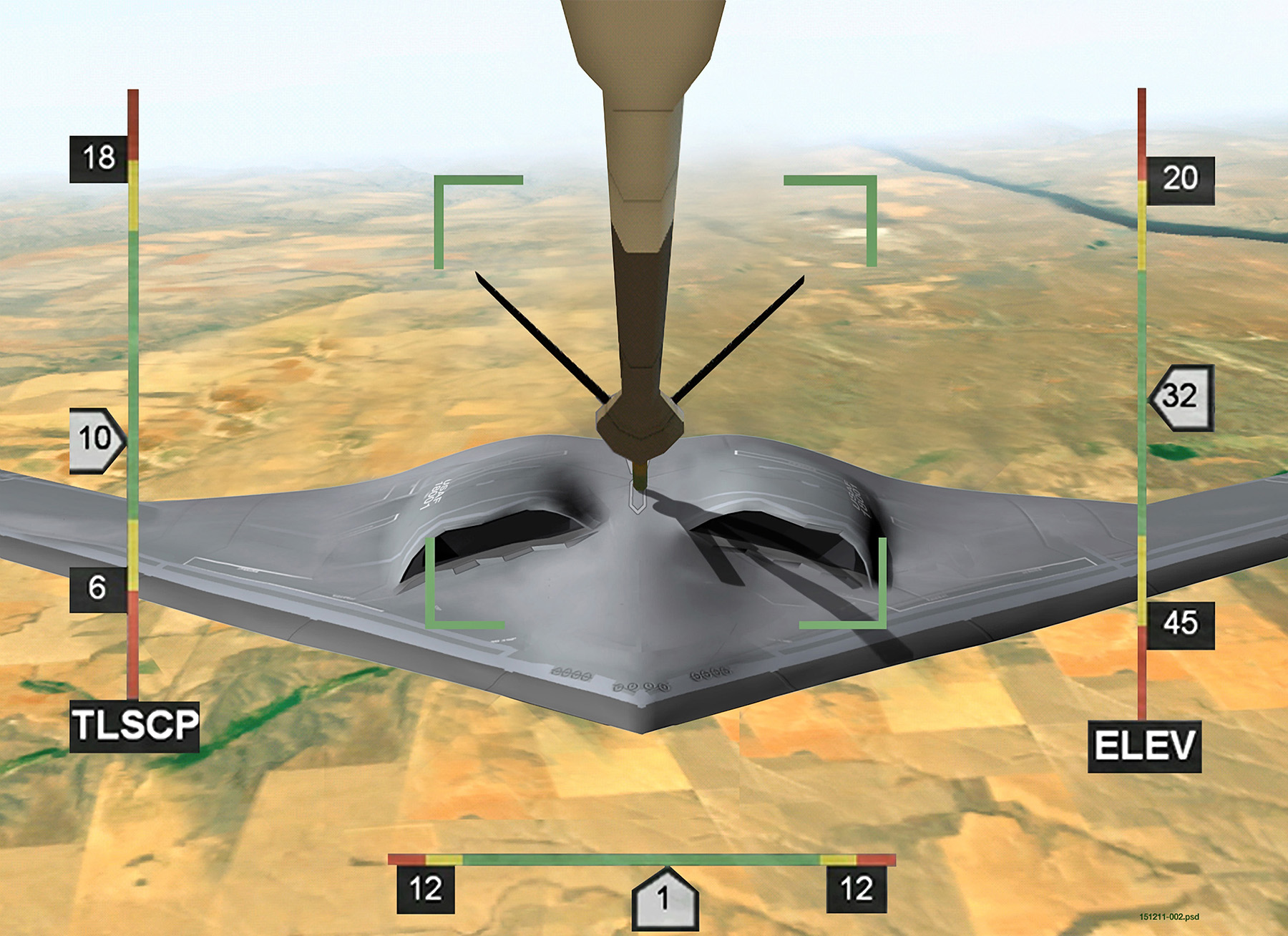
Its similarities to American concepts does not mean the Star Shadow is a direct copy or knock off as western media usually proclaims whenever any Chinese weaponry resembles its American counterparts. Still, Chinese cyber espionage activities are notorious, and the country certainly was given a massive leap in low-observable unmanned technology—not to mention the communications infrastructure that supports it—by being able to closely examine the RQ-170 Sentinel that fell into Iranian hands in late 2011.
As for the Star Shadow itself, supposedly it has roughly a 49 foot wingspan, is 23 feet long, has a gross takeoff weight of 9,000lbs and is capable of carrying a 900lb payload. It has a 10-12 hour endurance, a ceiling of roughly 45,000 feet and is powered by two TWS-800 turbofan engines. Overall it seems that the aircraft is similar in proportions to that of the RQ-170 Sentinel. And although Star Systems says this is an internally funded program, that may not be the whole story.
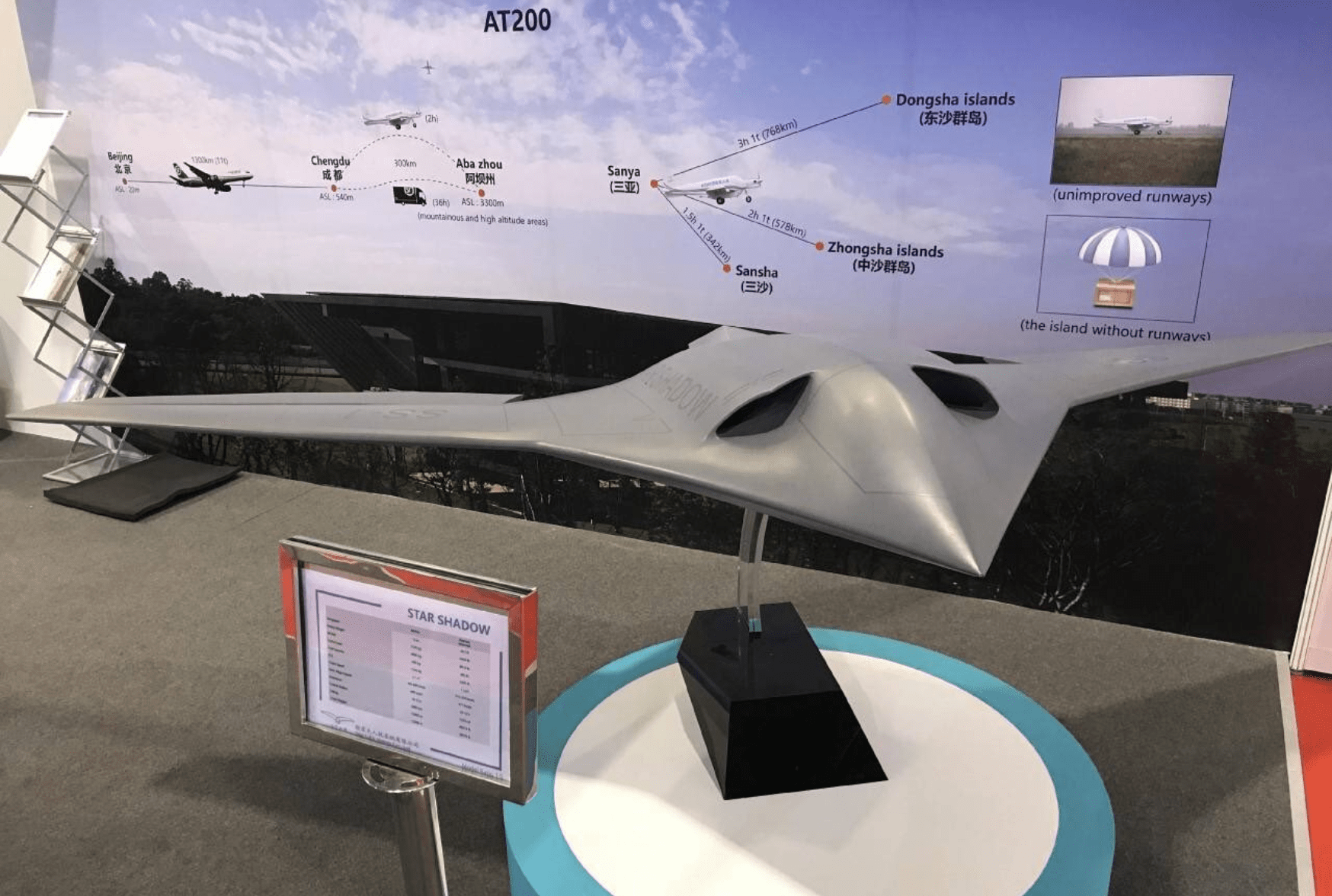
Last August, The War Zone debunked a report based on a satellite image that said Beijing’s stealth bomber had been spotted. We pointed out that the image was actually of a much smaller flying wing design, likely a radar cross-section test article, located at a radar cross-section test range not far from Beijing.
The airframe pictured in the satellite image had a wingspan of only around 50 feet. It turns out that this design matches the Star Shadow’s exactly, including its dimensions. Our conclusion at the time posited exactly this, stating:
“There is a decent chance that we will see China’s new prototype bomber in the not so distant future—which will represent not just a massive leap in combat capability but also one in construction techniques and material science for Beijing—but this absolutely isn’t it. Although it could share its shape, it’s more likely that the article belongs to China’s quickly advancing unmanned combat air vehicle development initiative or that of other flying wing drone programs—like the “Star Glory” SG-1 and CH-805 that are presently underway. The Star Glory in particular looks very similar to the object spotted in the satellite image and its stated dimensions seem near spot on.”
In fact, it seems as if Star Systems has just refined their original SG-1 “Star Glory” concept and renamed it. Regardless, of its title, Star Systems says the aircraft’s first flight is scheduled for next year, but we really have no idea how far along the project actually is. With a full scale radar cross-section test article existing, it’s probably further along than we are being told. The company now claims that the aircraft has a radar cross section of .1 square meter. This claim likely comes from validation testing done at the radar facility seen in the satellite image from last summer.
But this stealthy flying-wing unmanned aircraft program is one of number of similar initiatives that China is actively touting. Another program has emerged recently belonging to Aerospace Science and Industry Corporation (CASIC) dubbed “Tianying.” This aircraft is said to have already made three flights with the program beginning four years ago.
“Eighty percent of our drone’s technologies are the newest and most advanced, some of which are leading the global [drone] industry” Ma Hongzhong, Tianying’s chief designer said on Chinese social media. The aircraft is said to have been designed for long-range operations. Pictures of the craft surrounded by the CASIC team that designed it were also posted online, with the aircraft being blurred out, although its flying-wing design is clearly evident.
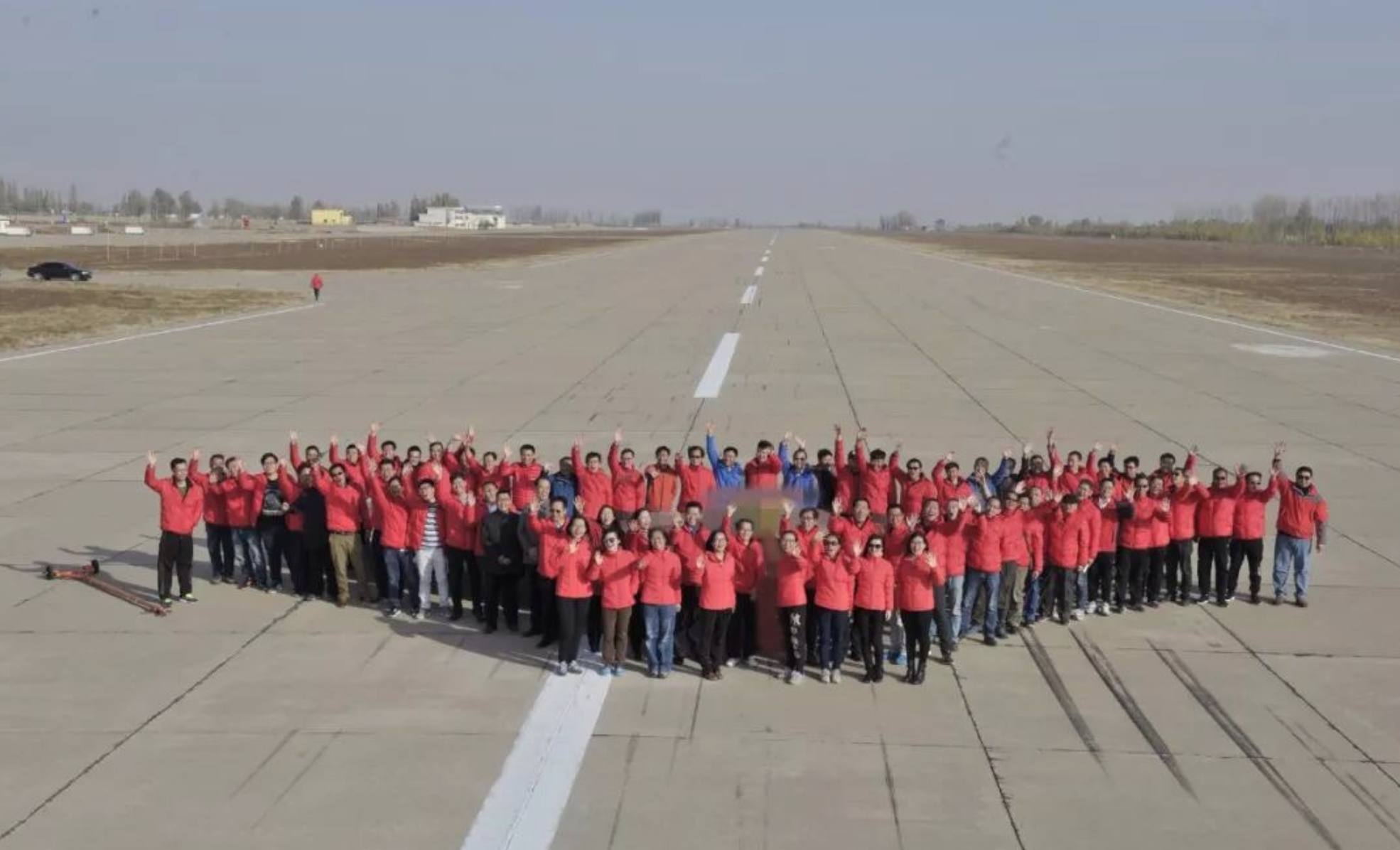
Another Chinese flying-wing drone also emerged on social media recently. Supposedly it belongs to Chengdu—China’s premier fighter aircraft manufacturer. It isn’t clear if the type is a sub-scale test article of a larger system or some other research and development effort. There have been rumors that China is working on an unmanned flying wing design that can have its wings swapped out for different mission profiles. For instance, longer, more slender wings for high-altitude endurance operations and shorter, thicker wings for maximum kinematic performance and maneuverability.
It’s worth noting that the same tow bar appears in both the tweet below and the image above. Although that doesn’t mean it’s the same aircraft, it does gives us an indication of scale. Chengdu has largely pioneered China’s stealth aircraft technology, with their J-20 being the first stealth fighter outside the United States that has entered operational service. It seems like a given that the company would also step into the UCAV space, especially considering their stealthy sensor, communications, and advanced avionics sub-systems integration knowledge.
The first appearance of a large-scale Chinese built stealthy UCAV-like aircraft was in 2013 in the form of the “Sharp Sword.” This aircraft design is from Shenyang Aircraft Design Institute and Aviation Industry Corporation of China, with Hongdu Aviation Industry Group doing the construction work on the project. The system is understood to be progenitor of a high-end UCAV that will be coming online sometime around 2020.
It is thought to be capable of carrying a similar payload to manned tactical aircraft, namely two 2,000lb class guided munitions, as well as the satellite communications systems needed to enable missions far from the Chinese mainland. UCAVs typically have a range advantage over their manned counterparts which equates to roughly two to four times the combat radius.
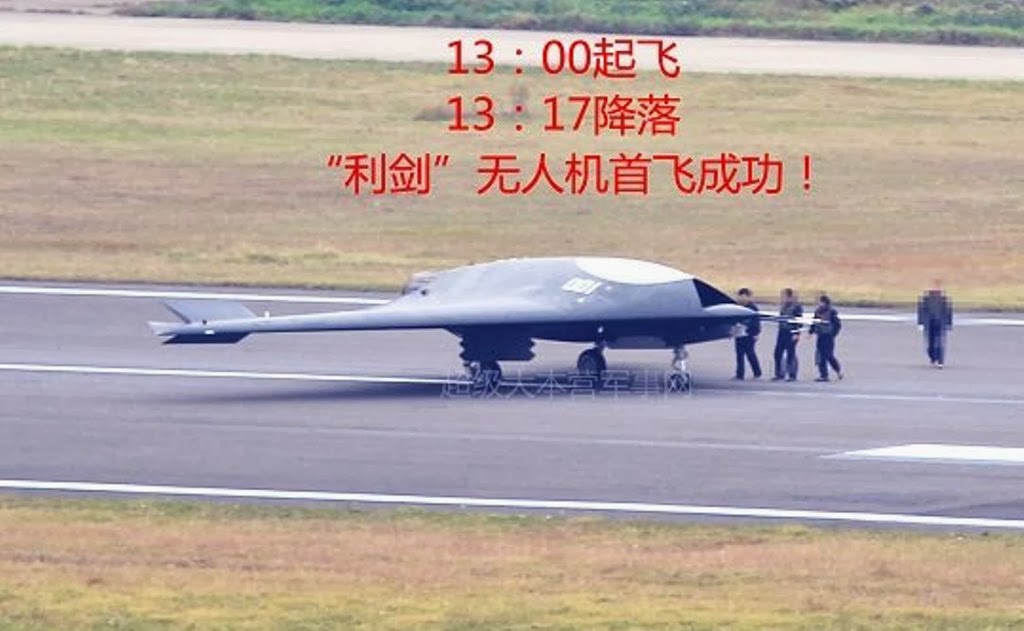
With this in mind, it seems that the Star Shadow would more concentrated on medium altitude, medium endurance information, surveillance and reconnaissance mission sets like the RQ-170 and the Sharp Sword—or an operational variant that emerges from it—will take on the strike mission set as a proper UCAV.
And again, we only get to see what the Chinese want us to. We know of other flying wing drone programs under development as well (War Eagle, CH-805, Sky Bow etc) and there are certainly other programs we don’t know about. There are also unmanned combat aircraft programs that don’t rely on a flying-wing planform but include stealthy features. But still, those we do get to see give us an insight into where China is heading with this technology and how aggressively they are pursuing it on various fronts.

It’s also worth noting that despite the negative inflection usually associated with operational Chinese unmanned aircraft, their growing Wing Loong and CH-4 family of systems that resemble the U.S. Predator/Reaper family is actually effective on the battlefield and has achieved export success. Sure they are not of the quality of their American counterparts, but they also cost far less and are more accessible to international customers. There is nothing to say that China won’t export some of its UCAV or penetrating reconnaissance drones as well. Similar developments are also occurring in the small drone swarm space.
In contrast to China, there is virtually no official talk of fielding an American stealthy UCAV fleet, and very little talk about the stealthy flying-wing unmanned surveillance craft that are known to exist. That doesn’t mean the concept hasn’t been developed by the USAF under the cloak of deep classification since it disappeared from public view in the late 2000s. Otherwise, if it hasn’t, and the social norms of manned air combat have taken precedence over the biggest breakthrough in air combat technology since the jet engine, it’s highly alarming.
Either way, the US is building a future air combat strategy that is void of semi-autonomous UCAVs, or even large fleets of penetrating stealthy reconnaissance aircraft, one that will impact the country’s ability to fight and win for decades to come. Once again we lay out this highly troubling reality in this past special feature, it is a must read because we can’t do it just simply by recapping it all again here.

Even the Secretary of Defense has trouble with the nomenclature surrounding unmanned aircraft and the very idea of unlocking their autonomous potential. Military.com quoted the Defense Secretary James Mattis as stating the following during a trip to Europe:
“One of the most misnamed weapons in our system is the unmanned aerial vehicle. It may not have a person in the cockpit, but there’s someone flying it… There’s someone over their shoulder. There’s actually more people probably flying it than a manned airplane… There’s all these people taking the downloads from it. There’s people deciding to load bombs on it or not, or ISR cameras, surveillance cameras, on it… It’s not unmanned.”
He is right when discussing Predator and Reaper drones which include a man-in-the-loop actually flying the aircraft, but that concept of operations is somewhat archaic compared to a semi-autonomous “point and click” concepts of operation which have existed since the early 2000s and has been proven operationally by the RQ-4 Global Hawk among other less known systems. He went on to discuss AI, and as a result, autonomy, which is the future of air combat:
“The fundamental nature of war is almost like H20, OK, and you know what it is. It’s equipment, technology, courage, competence, integration of capabilities, fear, cowardice—all these things mixed together into a very fundamentally unpredictable, fundamental nature of war… The character of war changes all the time… An old dead German [Carl von Clausewitz] called it a chameleon, OK?… All these questions… I don’t know right now, because at some point there’s going to be a human who does something— even if it’s nothing more than open the garage door and let them out… If we ever get to the point where it’s completely on automatic pilot and we’re all spectators, then it’s no longer serving a political purpose. And conflict is a social problem that needs social solutions—people, human solutions, OK?”
I can tell you that our potential enemies have no trouble defining these systems or embracing their game-changing capabilities, regardless of the moral ambiguity that may go along with it. What we are left with is potentially a missed opportunity of epic proportions. We could be spending considerable effort not simply trying to build a better fighter jet but to leap-frog the enemy in full by totally changing the game via investing in advanced unmanned air combat technologies.

Instead it seems the USAF and the Navy are concentrating on keeping a human totally in the loop via manned-unmanned teaming and other concepts. This is fine for some interim applications but totally keeps the great potential of autonomous swarming UCAVs under lock and key, and therefore stunts their inevitable growth.
The ability to take the man out of the equation to a large degree, and let the networked UCAV swarm reach its maximum potential to work as fast as possible to overwhelm and neutralize the enemy’s defenses and war fighting abilities is both a transformative concept and an inevitable one. And no, this is not about “Skynet” or unleashing free-thinking “robot” weapons onto the world haphazardly—those ideas may grab headlines in tech blogs but they are not an accurate description of unmanned autonomy in most respects. Even allowing a UCAV to fly into enemy territory, avoid or destroy enemy defenses, drop its weapon on an assigned target, and return back to uncontested airspace, all without communicating unless there is a major problem, is a form of autonomy that is no more ethically questionable than employing cruise missiles.
It may sound prudent to keep a lid on this technology, and doing so definitely benefits current big ticket fighter jet and other air combat related programs which cannot compete in many key respects with UCAVs, but we don’t have a say over what our enemies do in this regard. With that in mind, we are far better off leading in this space than following, and doing so can’t be done piecemeal under a vail of secrecy.
Big decisions are being made right now that dictate America’s air combat capabilities for decades to come, and those choices are being made in a bizarrely filtered reality where UCAVs and even penetrating stealthy surveillance drone don’t really exist. In the meantime China is accelerating its efforts in these respects judging by just what they allow us to see and Russia isn’t standing totally idle either.
If anything else, these developments serve as a reminder that we face real technological competition abroad and in order to succeed in widening the qualitative gap once again, past traditions and social dogma—largely those surrounding the fighter pilot and keeping unmanned autonomy in a bottle—need to be jettisoned with haste. Considering the U.S. still has an edge over China in regards to this technology, now is the time to embrace it by integrating it into the Pentagon’s overall war fighting strategy and back its accelerated development with significant dollars.
Contact the author: Tyler@thedrive.com
